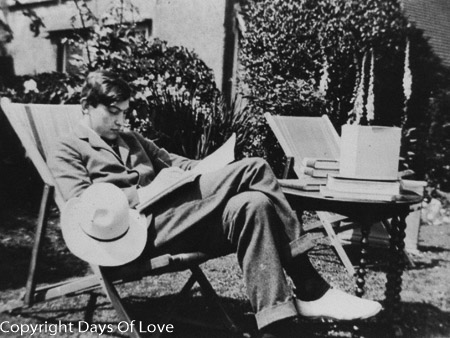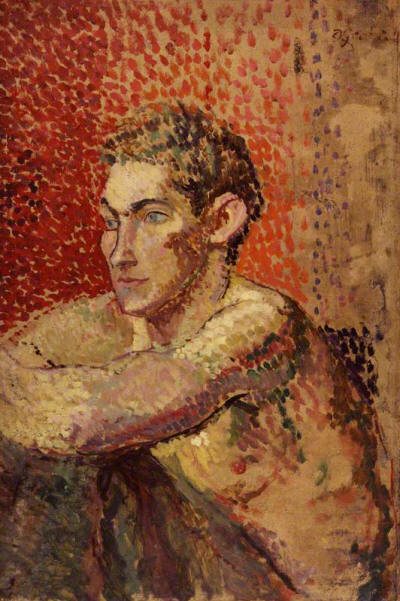

Wife Ruth Turner Mallory
Queer Places:
University of Cambridge, 4 Mill Ln, Cambridge CB2 1RZ
Winchester College, College St, Winchester SO23 9NA, Regno Unito
Charterhouse School, Charterhouse Rd, Godalming GU7 2DX, Regno Unito
North Slope of Mount Everest
 George
Herbert Leigh Mallory (18 June 1886 – 8 or 9 June 1924)[1]:546-547
was an English mountaineer who took part in the first three British
expeditions to Mount Everest, in the early 1920s.
George
Herbert Leigh Mallory (18 June 1886 – 8 or 9 June 1924)[1]:546-547
was an English mountaineer who took part in the first three British
expeditions to Mount Everest, in the early 1920s.
During the 1924 British Mount Everest expedition, Mallory and his climbing partner, Andrew "Sandy" Irvine, disappeared on the North-East ridge during their attempt to make the first ascent of the world's highest mountain. The pair were last seen when they were about 800 vertical feet (245 m) from the summit.
Mallory's ultimate fate was unknown for 75 years, until his body was discovered on 1 May 1999 by an expedition that had set out to search for the climbers' remains. Whether Mallory and Irvine had reached the summit before they died remains a subject of speculation and continuing research.
Mallory was born in Mobberley, Cheshire, the son of Herbert Leigh Mallory (1856–1943), a clergyman who changed his surname from Mallory to Leigh-Mallory in 1914. His mother was Annie Beridge (née Jebb) (1863–1946), the daughter of a clergyman in Walton, Derbyshire. George had two sisters and a younger brother, Trafford Leigh-Mallory, the World War II Royal Air Force commander. He was raised in a 10-bedroom house on Hobcroft Lane in Mobberley.[2]
In 1896, Mallory attended Glengorse, a boarding school in Eastbourne on the south coast, having transferred from another preparatory (prep) school in West Kirby. At the age of 13, he won a mathematics scholarship to Winchester College. In his final year there, he was introduced to rock climbing and mountaineering by a master, R.L.G. Irving, who took a few people climbing in the Alps each year.[3] In October 1905, Mallory entered Magdalene College, Cambridge, to study history.[4][5] There he became good friends with future members of the Bloomsbury Group, including Rupert Brooke, John Maynard Keynes, James Strachey, Lytton Strachey and Duncan Grant, who took some portraits of Mallory.[6] Mallory was a keen oarsman, who rowed for his college.[7]

George Leigh Mallory
Duncan Grant (1885–1978)
National Portrait Gallery, London
In 1909, Lytton Strachey wrote of Mallory:
After gaining his degree, Mallory stayed in Cambridge for a year writing an essay he published as Boswell the Biographer (1912). He lived briefly in France afterwards. In 1910, he began teaching at Charterhouse, another of England's great public schools, where he met the poet Robert Graves, then a pupil.[1]:195 In his autobiography, Goodbye to All That, Graves remembered Mallory fondly, both for his encouragement of his interest in literature and poetry, and his instruction in climbing. Graves recalled: "He (Mallory) was wasted (as a teacher) at Charterhouse. He tried to treat his class in a friendly way, which puzzled and offended them."[9]
While at Charterhouse, Mallory met his wife, Ruth Turner (6 October 1892 – 6 January 1942),[10] who lived in Godalming, and they were married in 1914, six days before Britain and Germany went to war. George and Ruth had two daughters and a son: Frances Clare (19 September 1915 – 2001), Beridge Ruth, known as "Berry" (16 September 1917 – 1953), and John (born 21 August 1920).
In December 1915, Mallory was commissioned in the Royal Garrison Artillery as a second lieutenant[11] and promoted to lieutenant in 1917. He served in France during the First World War and fought at the Battle of the Somme.[12][13]
After the war, Mallory returned to Charterhouse but resigned in 1921 in order to join the first Everest expedition. Between expeditions, he attempted to make a living from writing and lecturing, with only partial success. In 1923, he took a job as lecturer with the Cambridge University Extramural Studies Department.[1]:467 He was given temporary leave so that he could join the 1924 Everest attempt.
My published books: